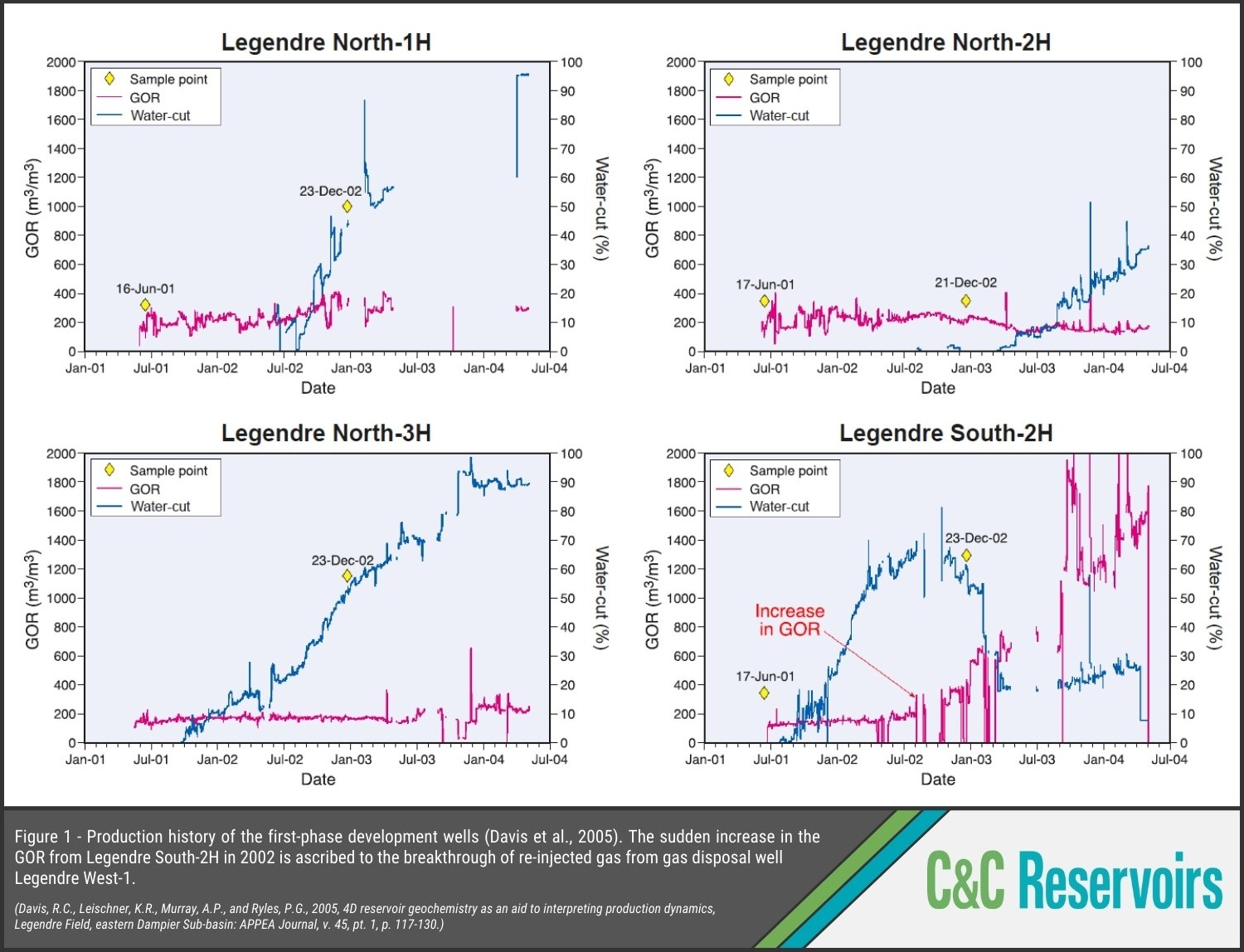The Legendre Field
Analogue Spotlight
The Legendre Field, the first oil discovery on the Northern Carnarvon Basin, offshore Western Australia, has a STOIIP of 90 MMBO and an EUR of 48.3 MMBO. Initially considered uneconomical after the first appraisal well was dry, further drilling and a 3-D seismic survey revealed the field’s true potential. Favorable reservoir characteristics – including an average porosity of 21%, permeability of 800 mD, and near tank-like architecture – proved key to its viability, and the field began production in 2001.
The field’s oil is trapped in two independent four-way dip closures, Legendre North and Legendre South. The sweet crude oil has an average API of 43.5° and a high initial GOR of 820 SCF/STB. Early on, solution gas was projected to be well in excess of facility fuel requirements. With the operator and partners demanding an environmentally responsible approach to the gas removal, ruling out flaring, it was decided to reinject the excess gas into the underlying Angel Formation, at a downdip location 3 km to the west of the field.
Initial models predicted that reinjected gas would migrate back into the field and be reproduced after production plateaued. However, by mid-2002, just a year into production, the Legendre South-2H well began to show an increase in GOR, which geochemical analysis confirmed was due to the arrival of reinjected solution gas. While unplanned, this had a surprising and positive impact on production: water-cut fell from 65% to 20%, stabilizing below 30% until mid-2004 (Fig. 1), while the OWC was pushed down-flank (Davis et al., 2005), contributing to the improved recovery. Although original production forecasts were also affected by uncertainties in gross rock volume and the level of aquifer support, it is considered most likely that the gas reinjection was the cause of the improved production.

